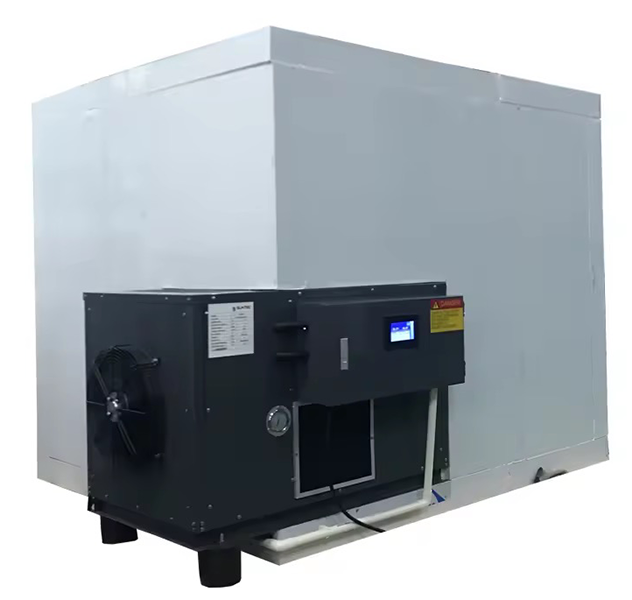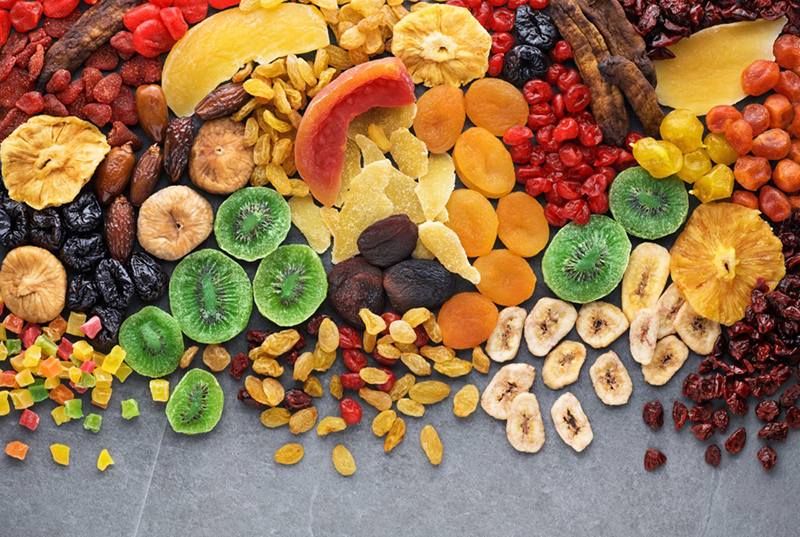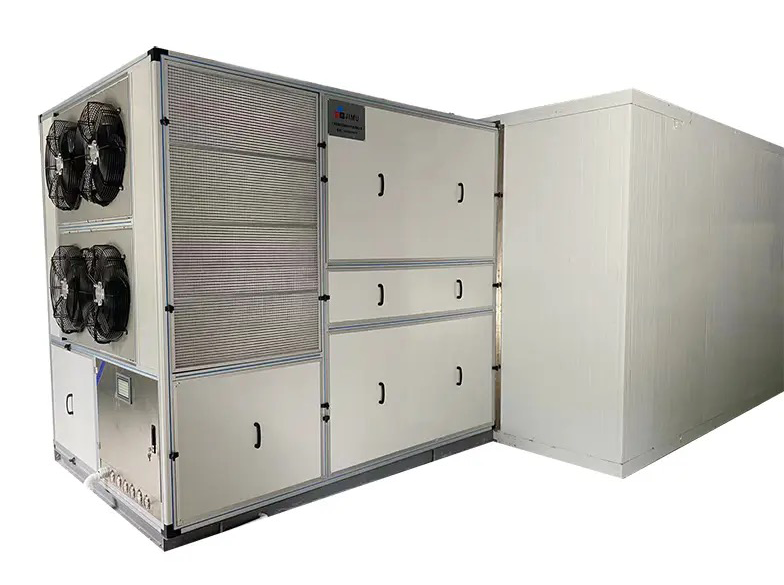
Content Menu
● Understanding Food Drying Machines
● Types of Food Drying Machines
>> 1. Condenser Dryers
>> 2. Vented Dryers
>> 3. Heat Pump Dryers
● Comparative Analysis
● Choosing the Right Dryer for Food Processing
● The Role of Technology in Food Drying
● Environmental Considerations
● Conclusion
● FAQ
>> 1. What is the most energy-efficient type of dryer for food?
>> 2. Can I use a vented dryer indoors?
>> 3. How often do I need to empty the water tank in a condenser dryer?
>> 4. Are heat pump dryers suitable for all types of food?
>> 5. What maintenance do these dryers require?
● Citations:
In the realm of food drying technology, understanding the differences between various types of dryers is crucial for manufacturers and consumers alike. This article will explore the key distinctions between condenser dryers, vented dryers, and heat pump dryers, particularly in the context of food drying machines.

Understanding Food Drying Machines
Food drying machines are essential in preserving food by removing moisture content. This process helps to prevent spoilage and extends shelf life while maintaining the nutritional value and flavor of the food. The choice of dryer can significantly impact the efficiency, quality, and energy consumption of the drying process.
Food drying is a method that has been used for centuries, with historical evidence indicating that ancient civilizations utilized sun and air drying techniques. Modern technology has advanced this process, allowing for more controlled environments that enhance efficiency and product quality.
Types of Food Drying Machines
1. Condenser Dryers
- Working Principle: Condenser dryers operate by heating air and passing it through the food items. The moisture from the food evaporates into this hot air, which is then cooled in a condenser unit. The moisture condenses back into water and is collected in a tank or drained away.
- Advantages:
- Efficient moisture removal without needing an external vent.
- Can be placed anywhere with access to electricity.
- Generally quieter than vented dryers.
- Ideal for small-scale operations or locations where venting is impractical.
- Disadvantages:
- Higher energy consumption compared to heat pump dryers.
- Requires periodic emptying of the water tank or connection to a drainage system.
- May have longer drying times compared to vented dryers due to lower airflow.
2. Vented Dryers
- Working Principle: Vented dryers work similarly to a large fan that blows hot air into the drying chamber. The moist air is expelled outside through a vent, allowing fresh air to enter and continue the drying process.
- Advantages:
- Faster drying times due to continuous airflow and high temperatures.
- Generally lower initial cost compared to condenser and heat pump dryers.
- Simple design leads to easy maintenance.
- Disadvantages:
- Requires installation near an external wall for venting.
- Can lead to increased humidity levels in surrounding areas.
- Less energy-efficient due to heat loss through venting.
- Not suitable for indoor use in humid climates without proper ventilation systems.
3. Heat Pump Dryers
- Working Principle: Heat pump dryers utilize a refrigeration cycle to dry food items. They extract moisture from the air inside the dryer, condense it, and recycle the warm air back into the chamber. This method is energy-efficient as it uses less electricity by reusing heat.
- Advantages:
- Extremely energy-efficient, reducing operational costs significantly.
- Gentle drying process that preserves food quality.
- Can operate at lower temperatures, making them suitable for delicate items such as fruits and herbs.
- Environmentally friendly option due to reduced energy consumption.
- Disadvantages:
- Higher initial investment compared to other types.
- Longer drying times due to lower operational temperatures.
- Requires more maintenance related to refrigerant systems.

Comparative Analysis
To better understand these differences, let's compare their characteristics in a table format:
| Feature | Condenser Dryer | Vented Dryer | Heat Pump Dryer |
| Energy Efficiency | Moderate | Low | High |
| Drying Time | Moderate | Fast | Slow |
| Installation Needs | No vent required | Requires external vent | No vent required |
| Operating Temperature | High (70-80°C) | Very high (80-90°C) | Low (40-60°C) |
| Cost | Moderate | Low | High |
| Moisture Removal | Effective | Very effective | Highly effective |
Choosing the Right Dryer for Food Processing
When selecting a dryer for food processing, consider factors such as:
- Type of Food: Delicate foods may require a heat pump dryer to avoid damage from high temperatures. For example, herbs and fruits are best dried at lower temperatures to retain their flavors and nutrients.
- Energy Costs: If energy efficiency is a priority, heat pump dryers are preferable despite their higher upfront cost. Over time, they can lead to significant savings on electricity bills.
- Space Availability: If space is limited or there's no access to an external wall for venting, condenser or heat pump dryers are ideal choices. This flexibility makes them suitable for various settings including small kitchens or urban environments.
- Volume of Production: For larger operations where speed is critical, vented dryers may be more suitable despite their energy inefficiency. They can handle larger batches quickly but may require careful monitoring of humidity levels in production areas.
The Role of Technology in Food Drying
Advancements in technology have led to significant improvements in food drying machines. Modern units now feature programmable settings that allow users to customize temperature and time based on specific food types.
Additionally, many machines come equipped with sensors that monitor humidity levels within the dryer, automatically adjusting airflow and temperature as needed. This not only enhances efficiency but also ensures consistent results across different batches.
Environmental Considerations
As sustainability becomes increasingly important in food production, choosing energy-efficient drying methods is vital. Heat pump dryers stand out as an environmentally friendly option due to their lower carbon footprint compared to traditional vented dryers.
Moreover, manufacturers are now exploring renewable energy sources such as solar power for operating these machines. By integrating solar panels with heat pump technology, businesses can further reduce their reliance on non-renewable energy sources while minimizing operational costs.
Conclusion
In conclusion, understanding the differences between condenser, vented, and heat pump dryers is essential for optimizing food drying processes. Each type has its unique advantages and disadvantages that cater to different needs within food processing operations. By evaluating factors such as energy efficiency, drying time, installation requirements, and cost, businesses can make informed decisions that enhance their production capabilities while ensuring quality results.
The choice of dryer not only affects operational efficiency but also impacts product quality and sustainability efforts within the industry. As technology continues to evolve, staying informed about these advancements will be crucial for manufacturers seeking competitive advantages in the market.

FAQ
1. What is the most energy-efficient type of dryer for food?
The most energy-efficient type of dryer for food processing is the heat pump dryer. It reuses warm air and operates at lower temperatures, significantly reducing energy consumption compared to condenser and vented dryers.
2. Can I use a vented dryer indoors?
No, vented dryers require an external vent to expel moist air outside. Using them indoors can increase humidity levels and lead to mold growth in enclosed spaces.
3. How often do I need to empty the water tank in a condenser dryer?
The frequency of emptying the water tank in a condenser dryer depends on usage but typically ranges from once every few uses to daily for heavy use.
4. Are heat pump dryers suitable for all types of food?
Yes, heat pump dryers are suitable for most types of food due to their gentle drying process that preserves flavor and nutritional value; however, they may take longer than other types.
5. What maintenance do these dryers require?
Regular maintenance includes cleaning filters, checking drainage systems (for condenser dryers), and ensuring vents are clear (for vented dryers). Heat pump dryers also require periodic checks on refrigerant levels.
Citations:
[1] https://www.antpedia.com/news/13/n-2600413.html
[2] http://www.rbhgsb.com/a/xinwendongtai/xingyexinwen/32.html
[3] https://www.1688.com/factory/b2b-4020883459c0020.html
[4] https://www.zhuangxiaomi.com/28823/
[5] http://life.yesky.com/273/2147482273.shtml
[6] https://www.youtube.com/watch?v=e_4RYAdViyk
[7] https://699pic.com/movie/1391348.html
[8] https://www.ike.cn/video.html
[9] https://www.sohu.com/a/479972028_120462847
[10] https://www.buhlergroup.com/global/zh/products/ecodry_dryer.html











